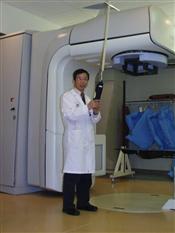Program Information
Monitor Interfractional Variation of Tumor Respiratory Motion Using 4D KV Conebeam Computed Tomography for Stereotactic Body Radiation Therapy of Lung Cancer
A Tai*, P Prior , E Gore , C Johnstone , X Li , Medical College of Wisconsin, Milwaukee, WI
Presentations
SU-E-J-31 (Sunday, July 12, 2015) 3:00 PM - 6:00 PM Room: Exhibit Hall
Purpose: 4DCT has been widely used to generate internal tumor volume (ITV) for a lung tumor for treatment planning. However, lung tumors may show different respiratory motion on the treatment day. The purpose of this study is to evaluate 4D KV conebeam computed tomography (CBCT) for monitoring tumor interfractional motion variation between simulation and each fraction of stereotactic body radiation therapy (SBRT) for lung cancer.
Methods: 4D KV CBCT was acquired with the Elekta XVI system. The accuracy of 4D KV CBCT for image-guided radiation therapy (IGRT) was tested with a dynamic thorax motion phantom (CIRS, Virginia)with a linear amplitude of 2 cm. In addition, an adult anthropomorphic phantom (Alderson, Rando) with optically stimulated luminescence (OSL) dosimeters embedded at the center and periphery of a slab of solid water was used to measure the dose of 4D KV CBCT and to compare it with the dose with 3D KV CBCT. The image registration was performed by aligning each phase images of 4D KV CBCT to the planning images and the final couch shifts were calculated as a mean of all these individual shifts along each direction.A workflow was established based on these quality assurance tests for lung cancer patients.
Results:4D KV CBCT does not increase imaging dose in comparison to 3D KV CBCT. Acquisition of 4D KV CBCT is 4 minutes as compared to 2 minutes for 3D KV CBCT. Most of patients showed a small daily variation of tumor respiratory motion about 2 mm. However, some patients may have more than 5 mm variations of tumor respiratory motion.
Conclusion: The radiation dose does not increase with 4D KV CBCT. 4D KV CBCT is a useful tool for monitoring interfractional variations of tumor respiratory motion before SBRT of lung cancer patients.
Contact Email:


